Located on the west coast, Colombo is Sri Lanka’s capital and largest city. Like Galle and other cities along the western coast, Colombo also endured a turbulent past under the rule of the Portuguese, Dutch, and British. But even before Europeans dug their claws into Sri Lanka’s strategic port city, seafaring traders were using Colombo as a major trade hub over 2,000 years ago. Even ancient societies like the Greeks, Romans, Persians and Arabs understood the value of trading goods with one another and the Sinhalese kingdom along the east-west trade routes in one of Sri Lanka’s largest natural harbors.
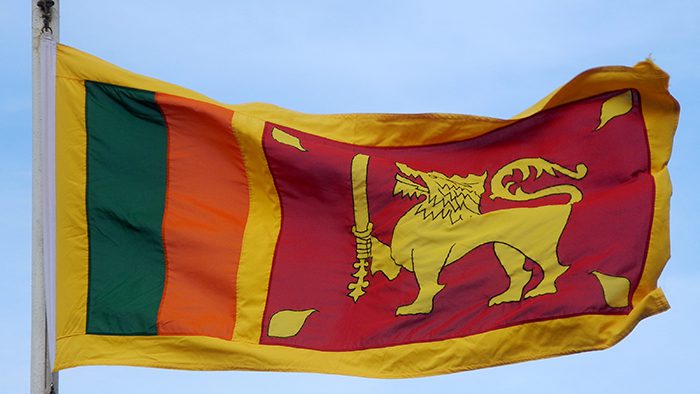
Nowadays, Colombo is an international city and Sri Lanka’s commercial center. It possesses a truly unique mix of natural, colonial, and modern features. Almost every British governor that held office in Colombo has a street named after him.
The city itself is not that large in comparison to other Asian cities, and it takes just 40-45 minutes to travel from one side of town to the other. In just one day you can see colonial buildings, explore the harbor, visit elaborately decorated mosques and temples, and enjoy a refreshing dip at the beach.
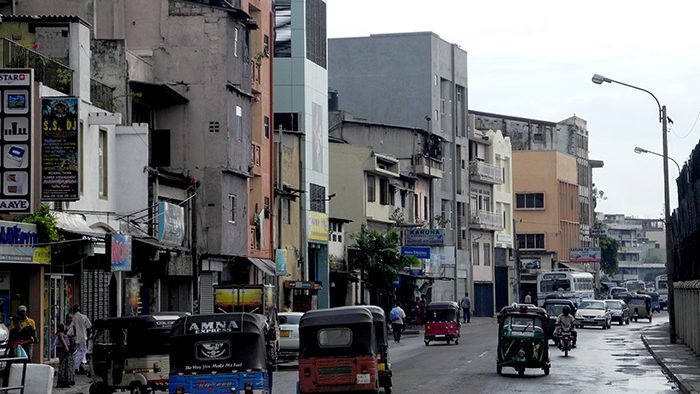
Visitors can get a crash course in the island’s history and culture at the National Museum. Its exhibits range from prehistoric to modern, and chronicle the island’s natural, political, and artistic history. The Gangaramaya Temple and the Dehiwala Zoo are also musts. Colombo also features tons of outdoor public space like the Viharamahadevi Park, Beira Lake, Galle Face Green, Independence Square, Pettah, and the Colombo Fort.

While most visitors stop over in Colombo for just a few days before heading out to explore other parts of the country, there is something to be said about the culture of this lively capital. The people’s friendly character is balanced by the hectic traffic of this buzzing metropolis. With a well-devised plan to experience the sights efficiently, comfortable walking shoes, and an open mind you will conquer Colombo and encounter a magical city unlike any other in the world.

The Gangaramaya Temple is a Buddhist place of worship and one of Colombo’s most popular attractions. Gangaramaya is a complex featuring an on-site temple, assembly hall, art gallery, and outdoor garden. Important Buddhist traditions, teachings, and offerings take place at Gangaramaya. Lucky guests will have the opportunity to witness these practices first hand. Gangaramaya monks are active in a variety of social services including those benefiting children, animals, people’s health, education, and spirituality. Built in the 19th century, Gangaramaya Temple boasts striking architecture that includes Thai, Indian, and Chinese elements.
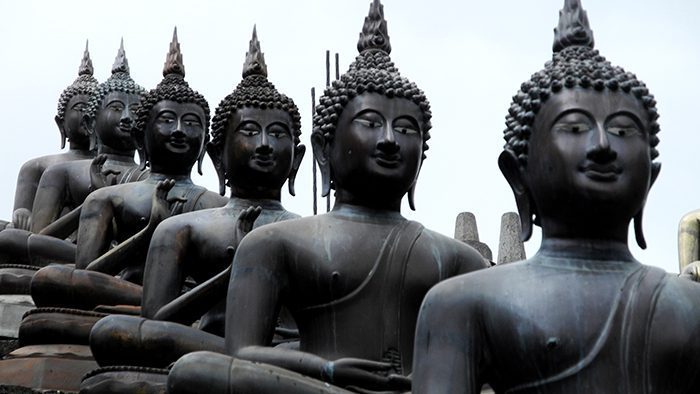
Gangaramaya’s gallery features a small museum and library. Here visitors can view ancient relics of the Buddha, a collection of arts and scripts from Buddhist temples throughout Sri Lanka, and other rare artifacts such as sapphires, oil lamps, and ivory carvings. Other decorative elements at Gangaramaya include statues of Buddha, rows of dwarfs in yoga-style positions, stone carvings, murals, gold and red pillars, and the courtyard. A collection of antique cars was donated to the temple and is on display in the courtyard along with the massive Bodhi Tree. Gangaramaya is about a 15-minute’s drive from the Cinnamon Lakeside Hotel and sits on the edge of Beira Lake. It is open daily from 8am to 8pm.
Hours of Operation:
Daily from 8 a.m. to 8 p.m.
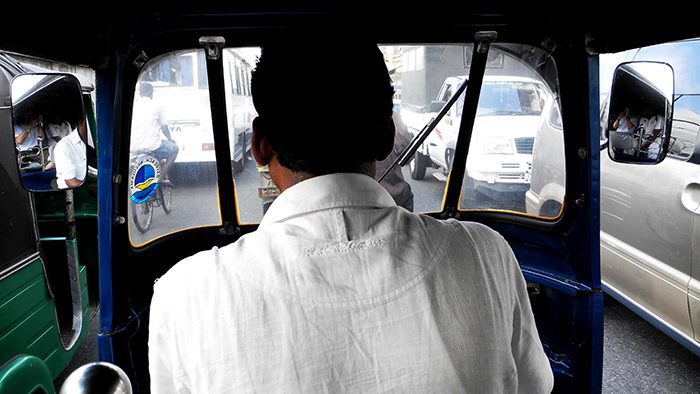
Tuk-tuk, nano cab, tri-shaw, auto rickshaw, and micro cab are all names used to refer to the small three-wheeled vehicle used in Colombo and other cities throughout Sri Lanka and India. Although tiny and relatively slow, the tuk-tuk is a trusted method of transportation for short distances. Most tuk-tuks do not come with meters, so you will have to negotiate with drivers before you get going. It is sometimes easier to negotiate when hailing a tuk-tuk traveling in your desired direction rather than with one that is parked.

Since there is no air-conditioning, or doors for that matter, the rides are meant to be cheap! You should always bring smaller bills because many drivers claim not to have change. Also, be wary of drivers who say they work for hotels. There is a 99% chance that they don’t, but want to instead take you to random sites around Colombo for which they receive payoffs. In general, tuk-tuk rides were fun and drama-free because I listened to the staff at the Cinnamon and took their advice on potential tourist scams. Tuk-tuks are a great alternative to walking and allow you to see the city and take plenty of pictures. By staying alert and knowing where you want to go, your tuk-tuk experience will be safe and fun!
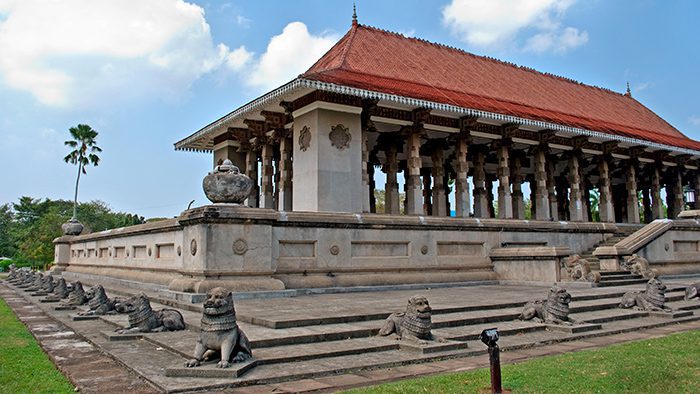
Independence Memorial Hall is a national monument built to commemorate Sri Lanka’s official independence from the British on February 4, 1948. The building’s style is uniquely Sri Lankan; it features massive pillars and rows of large, guardian stone lions. A statue of Rt. Hon. Don Stephen Senanayake presides over one of the outdoor concrete pavilions.
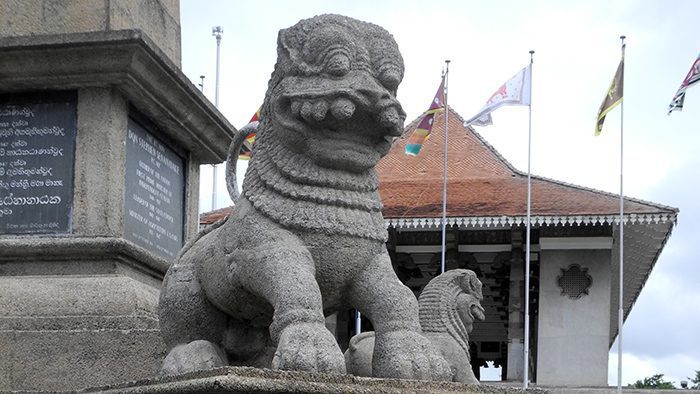
He was the first prime minister of Sri Lanka and considered by many to be the “father” to the nation. Independence Memorial Hall and plaza are open to the public and mostly used for celebrating national holidays and religious events. There is a museum at Independence Memorial Hall focusing on the site’s historical significance. It is open Tuesday through Saturday from 9am to 5pm.
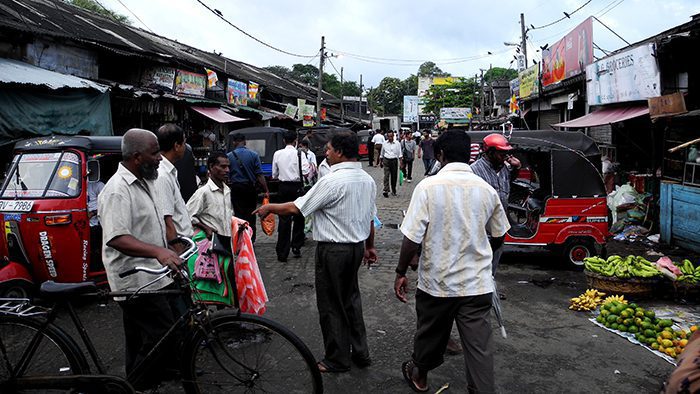
Colombo’s 24-block market district, Pettah, is located east of the Colombo Fort and features numerous street stalls, shops, and street traffic. A whirl around Pettah is a lively one, with vegetables, flowers, jewelry, spices, clothes, shoes, and household items being sold throughout the area. Like the bazaars of Morocco and Jordan, Pettah is a marketplace primarily for locals to run their daily errands and get deals on certain items. While walking through Pettah, you will notice each street has a theme. While Malwatte Avenue sells music, Keyzer Street is known for household items. Each street is crammed with items for purchase, but ladies especially love Sea Street’s goldsmith and jewelry shops.
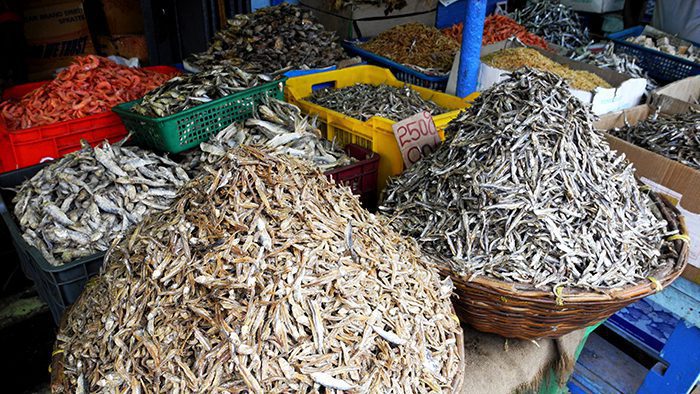
Sure, Colombo has upscale boutiques and shopping malls, but Pettah is more than just a shopping trip-it’s an experience. Bargaining is expected. You can always bring the price down a little and you should always try. For gemstones, you should instead visit one of the many reputable dealers in Colombo. Since the area around Pettah is home to many of Colombo’s Muslim residents (and not to mention most of the vendors are men), it is advised that ladies dress modestly to avoid being stared at or harassed.
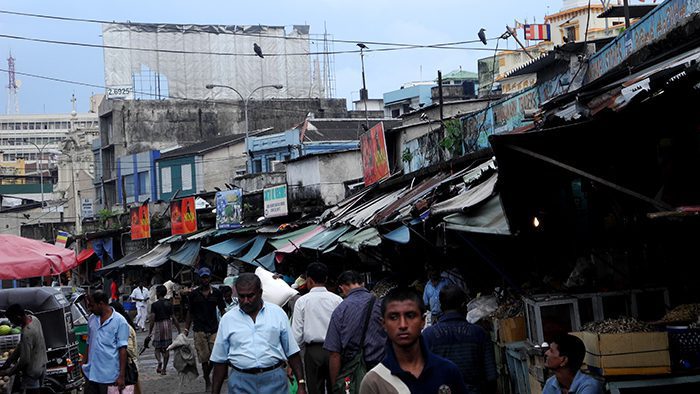
Everyone should keep belongings close and pockets guarded. Usually a “no thank you” will suffice when presented with something you do not want. If you feel like you need someone to guide you, most hotels in Colombo will provide you with a guide for Pettah for a small fee. Pick up ornate throw pillow covers, handmade jewelry, specialty teas, or small hand carved Buddhas as gifts. Although packed and sometimes smelly, Pettah is an authentic bazaar experience not to be missed.
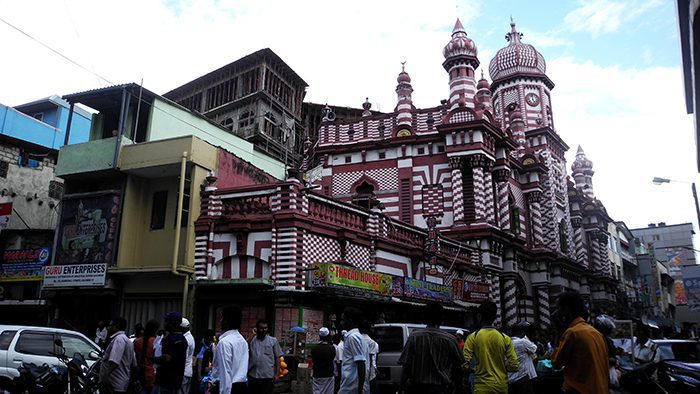
Located within the Pettah district is the Jami-Ul-Alfar Mosque, or the Grand Mosque, of Colombo. It is hard to miss this patterned red and white colored building as it towers brightly over the nearby shops. The Grand Mosque is representative of the significant presence of Muslims in Sri Lanka, which originated when Arab traders bartered along Sri Lanka’s western coast beginning in the 7th century. They traded spices, exotic animals, foods, and slaves with Asia, Europe, and the Singhalese Kingdom of Sri Lanka. Many of these Arab merchants stayed to work and live in Sri Lanka. Their modern day descendants are known as the Ceylon Moors.
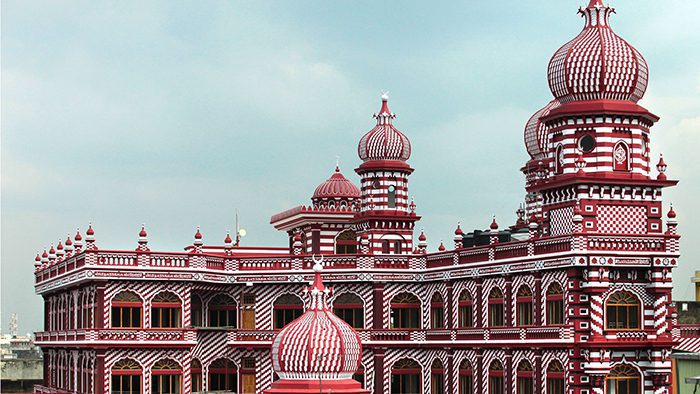
It is believed that the location of the current Grand Mosque is the site where previous mosques have stood for hundreds of years. The Grand Mosque is a significant religious center for the Muslims of Colombo, and proudly bears testament to Islamic presence in the country for centuries. The Grand Mosque turned 500 years old in 2005. Although is has been redesigned and expanded by various architects and engineers, it remains a pillar of pride for the Pettah community and a delight to behold. Non-Muslims can enter the Grand Mosque, but not during prayer times or on Fridays. As in all other mosques throughout the world, taking pictures of people praying inside the Grand Mosque is forbidden. Women should wear a head covering and everyone must remove their shoes before entering.
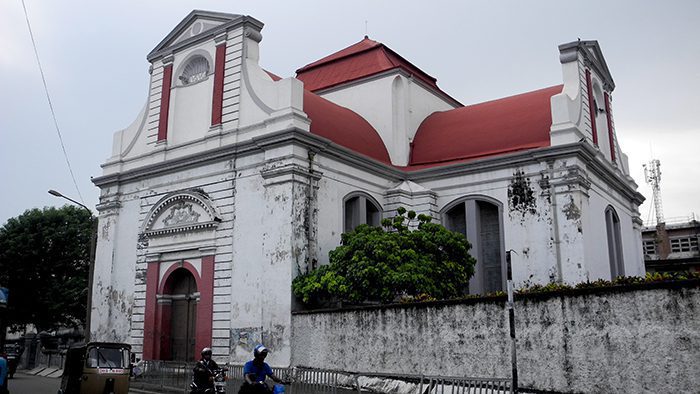
The Wolvendaal Church is the oldest Protestant church in Sri Lanka and is the most significant example of Dutch architecture in the country. With the help of local laborers, construction began in 1749 and lasted eight years. The church was designed in the form of a cross and has a capacity of 1,000 people. It is in good condition due to ongoing renovations by the Dutch Embassy in Colombo. The church still contains an original 18th century pulpit, ebony hand-carved chairs, murals, and is paved with tombstones of Dutch governors.
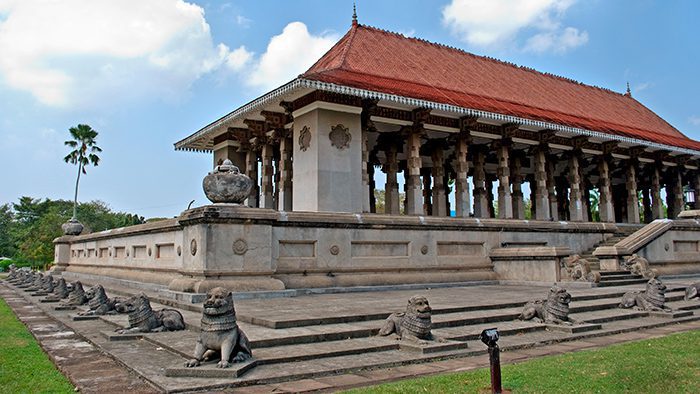
West of the Pettah district is the commercial heart of Colombo. Colombo Fort once served as the city’s main fort. Unlike the Galle Fort, which contains several original colonial buildings, walls, ramparts, and towers still standing, the Colombo Fort is really a misnomer for the area. Built, rebuilt, and expanded by the Portuguese and Dutch colonists, the Colombo Fort was eventually demolished by the British around the year 1870. Nonetheless, there is a clock tower on the corner of Catham Street and Janadhipati Mawatha, or “Queen’s Street.” The tower, which once functioned as a lighthouse, was converted and fitted with a clock in 1860, making it older than London’s Big Ben by two years.

Aside from the grid-patterned streets and decayed sections of the old wall, the clock tower is one of the only remaining original builsings. The Colombo Fort area is now full of hotels, government buildings, corporate offices, banks, and restaurants. Another point of interest in the area is the President’s House, which is located next to Gordon Gardens. The house is Colombo’s version of the White House. Every British governor and President of Sri Lanka has lived there. It is a palatial mansion primarily used for official state functions. Unfortunately, this particular site is closed to the public. The Colombo Fort area can easily be seen in a morning.
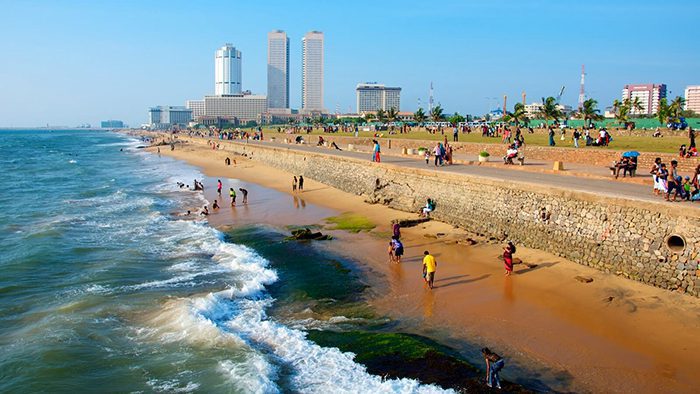
Stretching from the Colombo Fort area along the Indian Ocean, Galle Face Green is the largest open space in Colombo. Sir Henry Ward, the British governor of Ceylon in 1859, created this open grassy promenade as a public space. Framed by the ocean shore and the “twin towers” of downtown Colombo, Galle Face Green is a timeless space ideal for recreational activities such as picnics, kite flying, and sunbathing.
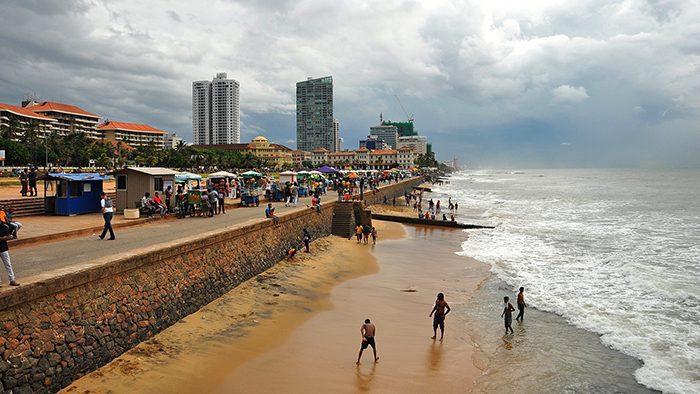
The space itself is as plain as the grass that grows on it aside from the row of antique British cannons, but the residents of Colombo make great use out of it. Consider stopping by on Saturday or Sunday evening to sample authentic Sri Lankan street treats and watch the sunset from the steps by the beach. Food vendors set up shop with their carts along the edges of the green , where they sell freshly made snacks. Fried crabs, shrimp, and vegetables are sold for cheap. There is a great family atmosphere, and the experience of it all is quite fun.
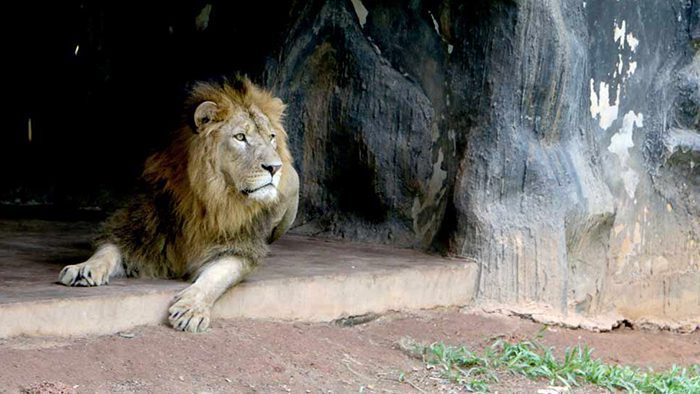
The Zoological Gardens of Deliwaha, or the Deliwaha Zoo for short, is located just six miles (11 kilometers) from the Colombo Fort and exhibits over 500 species of birds, mammals, reptiles, fish, and butterflies. Highlights include elephants, monkeys, and sea otters; amongst other residents of the zoo: ocelots, tigers, owls, jackals, hippos, deer, orangutans, giraffes, snakes, and camels.
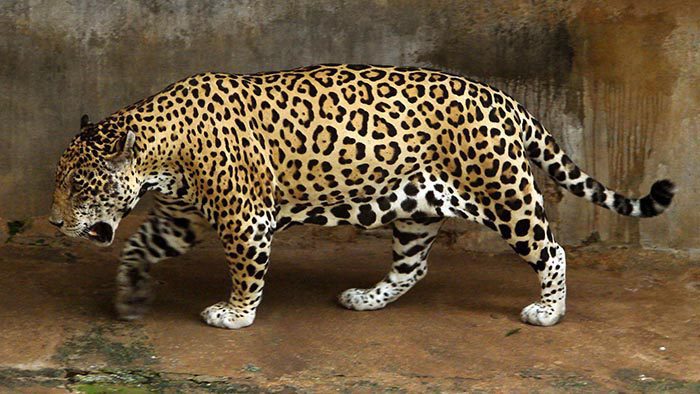
The exhibits are located along 26 acres of lush landscaped land. The property was purchased by the government in 1936 from two of the most successful animal dealers in the world, the Hargenberg brothers of Germany. The Deliwaha Zoo provides tourists and residents of Colombo with a place to come to and get away from it all. It also serves as an educational center for veterinary and school aged children alike. Every year over one million people come to the Deliwaha Zoo to observe the hundreds of animals here, big and small. The zoo features a daily elephant show at 4:30 p.m. and a sea lion show at 4 p.m.
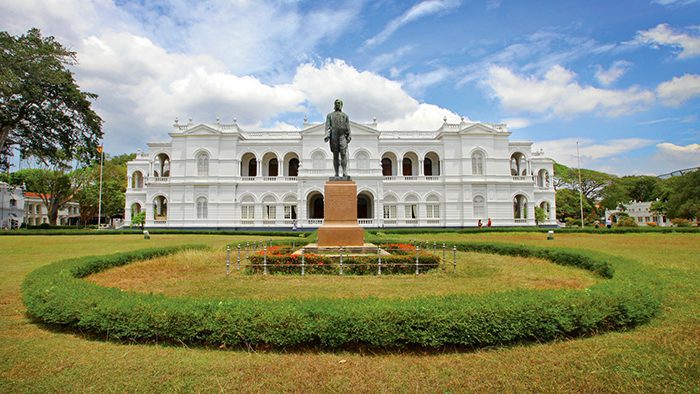
Colombo’s National Museum is the largest museum in Sri Lanka. You will find no better place to learn about the history, nature, religion, and culture of this great island nation. Sir William Henry Gregory, the British governor of Ceylon at the time, established the National Museum in 1877 and had it built in true dramatic Italian style.

During its 134 plus years of existence, the museum has amassed an impressive collection of artifacts and antiquities from all over the country. Some of the rare objects on display are royal garments, thrones, fine jewelry, precious gemstones, palm leaf manuscripts, Buddhist historical objects, stone-age pottery, masks, coins, paintings, and textiles. With over 15 distinct galleries spread over two floors, there is plenty of history to take in. Not all the exhibits feature detailed descriptions (or descriptions at all for that matter), so it may be worth your while to ask for the service of a guide at the ticket counter. Extra photography fees apply for those who would like to take pictures. The National Museum is located near Independence Square.
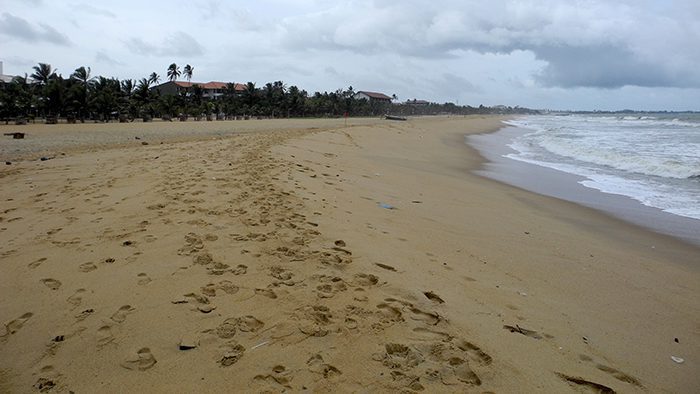
Twenty-two miles (37 kilometers) north of Colombo lies Negombo, a small fishing town with plenty of beach to play on. Like so much of western Sri Lanka, it was occupied by Portuguese, Dutch, and British colonists. With a long maritime history under its belt, it is no wonder why the seafood industry is still thriving here today. Negombo is home to the second largest fish market in Sri Lanka.
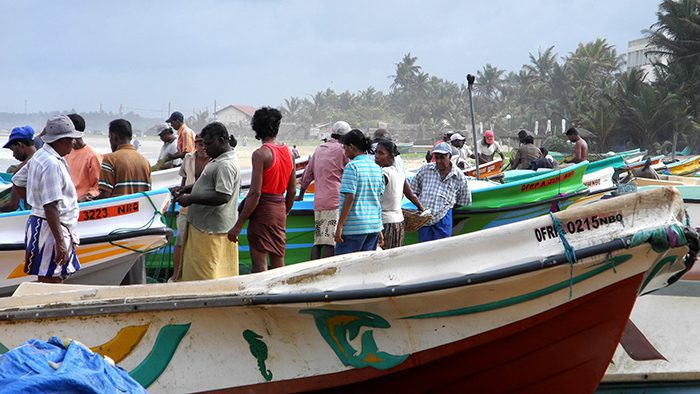
Here you will most likely find thousands of sardines and tuna fish lying out to dry on nets. They are salted and dried as a form of preservation, kind of like beef jerky. Some local fishermen stay out at sea for over one month to bring in a hefty catch! The bustling fish market may be filled with fishy wafts of scales and guts, but it is a photographer’s dream. Capturing images of the local fishermen selling their catches after a hard day’s work was an unforgettable experience.
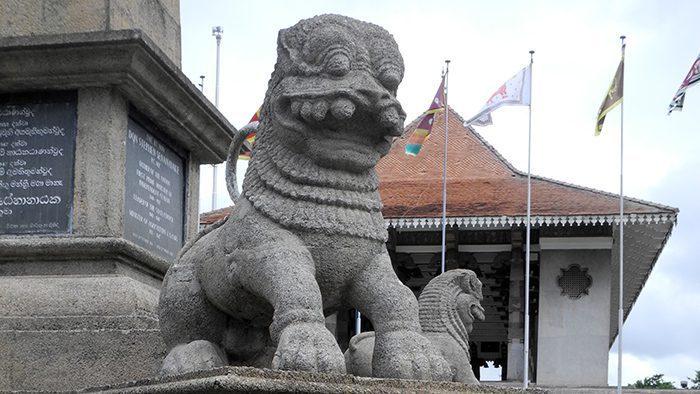
For a more relaxing time, head to one of the quieter stretches of beach via tuk-tuk. Negombo Beach is kept clean thanks to the resorts in the area, and is safe to swim most of the year. Water sports such as diving, wind surfing, and snorkeling are also popular in Negombo from November to April when the waters are calm. There’s no shortage of fresh fish in town, and near Negombo Beach you’ll find seafood restaurants serving up a gamut of fresh dishes. The most common way to get to Negombo from Colombo is by taxi, which will set you back about 1,200 LKR, or about $11. Choose wisely…not all taxis are equipped with air-conditioning.
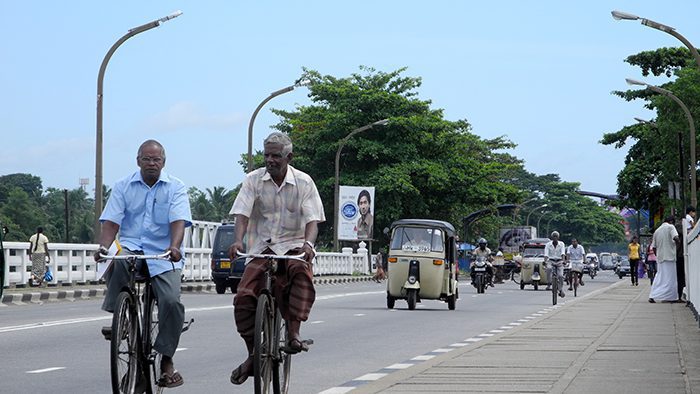
Just over 24 miles (40 kilometers) south of Colombo, in the opposite direction of Negombo, is the charming beach town of Kalutara. The area is filled with a-list hotels and beach resorts. Once satiated with profitable spice and rubber plantations, Kalutara has retained many of its canals originally irrigated by Dutch colonists to water their moneymakers. Kalutara is known throughout west Sri Lanka for its unique and colorful basket weaving traditions. At the Kalutara Basket Centre, Watekaia palm leaves and coconut fibers are transformed into vibrant and complex works of art. These make wonderful original keepsakes for loved ones back home.
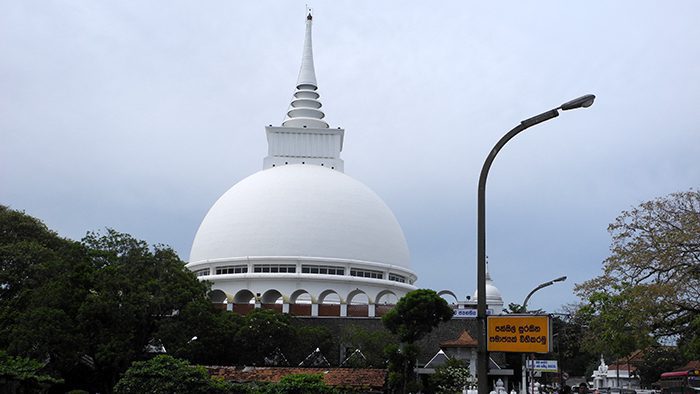
When you have had your fill of baskets and beaches, head over to one of Kalutara’s Buddhist temples. Just beyond the Kalu Ganga River bridge is the gleaming Kalutara Vihara temple. It is a large, white domed structure (stupa) that was built in the 1960s. Both ancient and modern stupas exist throughout the world, but Kalutara Vihara is the only hollow stupa in existence. Inside there are several Buddhist shrines, over 70 murals representing scenes in Buddha’s different lives, and a Bo tree enclosure. People come from all over Sri Lanka to leave offerings and burn incense.
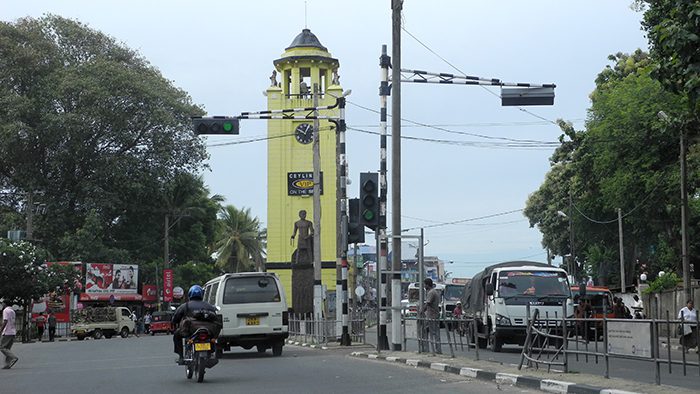
Last but not least, you have to remember to make time to relax! The AVANI Kulutara Resort is a great place to do just that. It is located about ten minutes from Kalutara’s center where the Kalu Ganga River meets the ocean, and features fabulous remedies for rest and relaxation. The AVANI Spa provides an array of treatments in a tropical, serene setting.
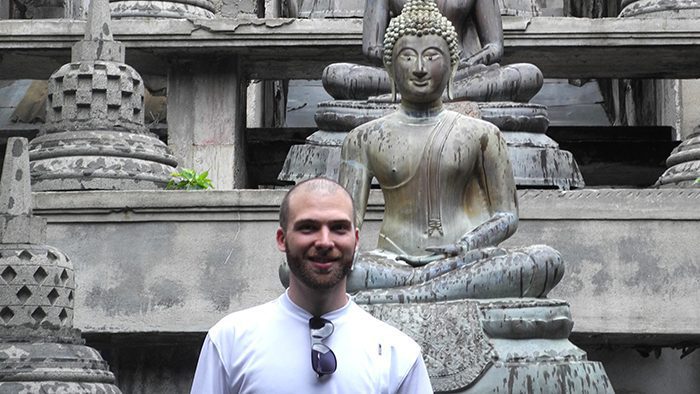
Give yourself a minimum of two days to explore Colombo. Many tourists use Colombo as quick stop over without realizing how much they’ve really skipped. The city is small, but is a great way for travelers to get acquainted with Sri Lankan culture. I had the pleasure of staying at the Cinnamon Lakeside Hotel (previously known as the TransAsia Hotel), and I can attest to its modern, elegant décor and thoughtful staff. Restaurants in Colombo proved to be diverse and delicious. Expatriated restaurateurs have helped revamp the dining scene, and prices seem to be fair across the board.

Unlike restaurants, finding worthwhile nightlife venues proved to be a bit more challenging. It’s not that there aren’t plenty of bars and clubs in town; it is that they change names constantly. What is popular this month may not be the next. That is why I stress the importance of speaking with your hotel concierge for more up-to-date information than I can provide in this guide. One experience that you must not pass up is sunset by the beach at Galle Face Green. The area gets packed with families and hungry folks who come from all over Colombo to sample the street grub. And, who doesn’t like an Indian Ocean sunset? To learn more about Colombo check out Olanka Travels.

Negombo and Kalutara are just two day trip options you have from the capital. There are hundreds of beachside towns spanning Sri Lanka’s west coast. Most have upscale resorts that help arrange excursions, water sports, and other tours of interest. The best time to visit Sri Lanka’s west coast is November to April, which is the dry season and best time for swimming. Come hungry, dive in, and sleep tight in historic Colombo before exploring other parts of this island nation.
Time zone: GMT +5:30 hours (Indian Standard Time)
Capital city: Colombo
Languages spoken: Sinhalese, Tamalese and English
Currency: Sri Lankan rupee (LKR)
Currency converter: XE
Getting around: When traveling between cities, buses and trains are best. Buses can be really crowded and are seldom air-conditioned. Though trains are slower and can be crowded as well, they often considered the more comfortable mode of transportation. When in the city, tuk-tuks, buses, taxis, and, in many cases, simply walking, are all viable forms of transportation. In some cases, cars and drivers can be hired for a day or bicycles can be rented.
Tipping policy: Service fees, typically 10%, are included at most restaurants. Drivers and guides will also expect tips. A tip of 50 LKR is acceptable for hotel doormen and the people who collect guests’ shoes at the temple.
Electricity: There are two types of sockets, the Type D Indian 5 amp BS-546 and the European CEE 7/16 Europlug.
Entry/exit requirements: As of January 1, 2012, all holiday and business travelers to Sri Lanka must have an Electronic Travel Authorization (ETA). This can be obtained online through the Sri Lanka Electronic Travel Authorization System website.
Health and safety: Though cases are rare, dengue fever is endemic to Sri Lanka. The mosquito-borne illness, though treatable, has potential to be fatal. The only way to prevent contracting the dengue virus is by avoiding getting bitten by mosquitoes. Use a reliable cream or spray insect repellent to keep mosquitoes at bay and sleep under a mosquito net whenever possible. Symptoms usually begin four to seven days after being bitten by an infected mosquito. Seek medical treatment if you think you have dengue fever. Adequate emergency medical treatment in private hospitals can be expensive. It is advisable to have travel health insurance coverage during your stay. We recommend the Explorer package by World Nomads. To avoid unwanted attention, refrain from displays of wealth including wearing expensive jewelry and producing large amounts of cash.
Best time to go: December through March, or European winter season, is the best time to visit. It is important to note, however, that predicting monsoon weather is not an exact science and sporadic rains can occur at any time of the year.
Book your Full-day Sightseeing Tour of Colombo here!
What are your recommendations for the best places to visit in Colombo? We would love to hear from you! Leave us a question or comment below.
Counter
101 Countries • 1432 Cities